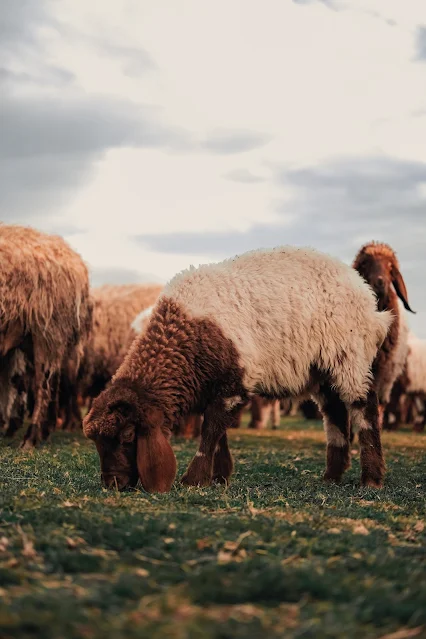Introduction:
Sheep, often associated with fluffy white wool and peaceful grazing, are fascinating creatures that have been domesticated for thousands of years. These gentle herbivores are not only a source of wool and meat but also play a significant role in various cultures and ecosystems around the world.
The Origin of Domestication:
Sheep (Ovis aries) were one of the earliest animals to be domesticated by humans, with evidence dating back to around 10,000 BCE. Initially, domestication occurred in regions such as Mesopotamia, and these early relationships between humans and sheep laid the foundation for agriculture and settled communities.
Sheep Breeds:
There are hundreds of different sheep breeds worldwide, each adapted to specific environments and serving various purposes. Some breeds are prized for their wool, producing high-quality fibers used in textiles, while others are raised primarily for meat production. Popular wool breeds include Merino, Rambouillet, and Border Leicester, while meat breeds include Suffolk, Dorset, and Hampshire.
Wool Production:
Sheep wool, known for its warmth and versatility, is a valuable natural resource. The process of shearing, where the wool is carefully removed from the sheep's body, is essential to maintain their health and prevent overheating. The wool industry has evolved with advancements in breeding for improved fiber quality and sustainability practices.
Behavior and Social Structure:
Sheep are known for their strong flocking instinct. They feel safer and more secure in groups, often following a dominant leader. While they may seem docile, sheep can display complex social behaviors, forming close bonds with flock members. Their communication involves vocalizations, body language, and a keen sense of smell.
Ecological Impact:
Sheep grazing has both positive and negative effects on ecosystems. When managed sustainably, sheep can contribute to maintaining grassland biodiversity by preventing the dominance of certain plant species. However, overgrazing can lead to soil erosion and the degradation of pastures. Sustainable grazing practices are crucial to maintaining a balance between agriculture and environmental conservation.
Cultural Significance:
Sheep hold cultural significance in many societies. From ancient traditions and religious symbolism to folklore and art, sheep have left their mark on human history. In some cultures, sheep are associated with fertility and prosperity, while in others, they represent innocence and purity.
Challenges Facing the Sheep Industry:
Despite their contributions to agriculture and various industries, the sheep industry faces challenges such as disease management, environmental sustainability, and ethical concerns related to animal welfare. Ongoing efforts focus on addressing these challenges through research, technology, and improved farming practices.
Conclusion:
Sheep, with their woolly coats and gentle demeanor, have been companions to humans for millennia. Beyond their practical contributions, they have woven themselves into the fabric of our cultures and histories. Understanding and appreciating these remarkable creatures are essential as we navigate the complexities of agriculture, sustainability, and our interconnected relationship with the natural world.


0 Comments